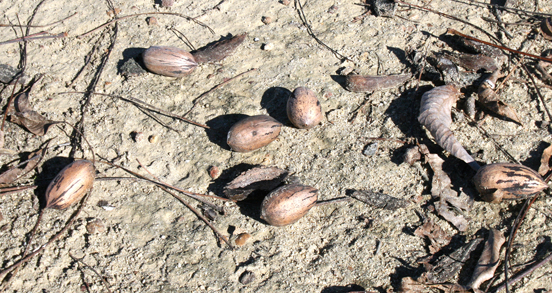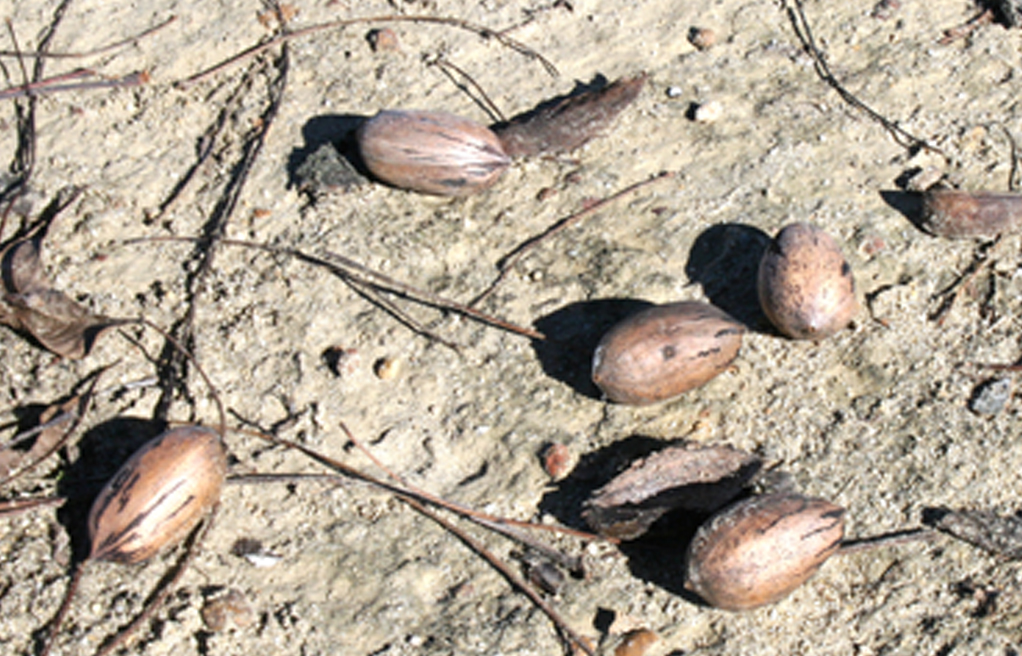Georgia’s 2013 pecan crop was not as plentiful as farmers hoped for, and one University of Georgia expert says this year’s crop could be even worse — if history repeats itself.
Steady rainfall and pecan scab disease decimated Georgia pecans this past season. Between June and September, the state incurred 30 inches of rain and 60 rainy days, according to UGA pecan specialist Lenny Wells. The end result was low pecan yields throughout Georgia.
A similar weather pattern in 2003 led to a pecan crop of about 75 million pounds. A wet summer that year led to the state’s poor pecan production, which dropped dramatically the following year when Georgia produced just 45 million pounds.
“Too much rain and disease is not just bad for the year it happens, it’s bad for the next year, too. All of that disease pressure, all of those cloudy conditions and some late-season pressure from some insect pests put a lot of stress on those trees at the wrong time,” Wells said. “That generally doesn’t bode too well for the following year.”
Pecan orchards that produced decent yields with pretty good quality or no crop at all have good potential to rebound with a decent crop the next season, he said. Orchards that produced a pretty good crop until August and then endured a downward spiral are likely to field a poor crop next year.
“With a perennial crop like pecans, management and environmental conditions often affect not only the current year but the following year as well, and sometimes even beyond that. Physiologically, our pecan trees determined what type of 2014 crop they will produce in August of last year,” Wells said.
Stress put on the trees during that time of year, whether from crop load, insects, disease, or environmental conditions, will affect the next year’s crop, he said.
Georgia farmers can be encouraged by the state yield numbers that indicate more than 60 million pounds of pecans will be produced in 2014. This is a little more than first predicted. Many growers are holding off on selling their pecans because of low prices. Wells estimates between 10 and 15 million more pounds are in storage.
The boost in production can be credited to increased yields in areas above Highway 280 which runs through Crisp and Sumter Counties. South of that line, in areas like Tifton, Thomasville and Southeast Georgia, production struggled, due in large part to pecan scab pressure.
The fungus that causes pecan scab attacks young leaves in the spring and shucks throughout the summer. If untreated, lead infections can defoliate the tree and nut shuck infections can reduce the crop and quality.
“It was tougher to control scab in those areas because moisture just holds there naturally anyway, and there were so many frequent rains, it was difficult for (farmers) to get out there and spray, even though they knew they needed to. It was too wet or it was raining and they couldn’t get out there to do it,” Wells said. Cloudy conditions also made it difficult for the trees to fill out the crop.
Disease and cloudy days also contributed to the pecans’ low quality, which led to a decrease in prices. According to Wells, Stuart variety pecans sold for $2.30 per pound when the season began, but dropped to $1.25 to $1.30 when the season ended. Wells noted that lower quality Stuarts dipped below $1.
Farmers normally start spraying for scab in April and continue every two weeks, depending on rain and scab pressure. If drier conditions emerge over the upcoming months, farmers won’t spray as much.
“I think everybody will be on their toes with their timing of that first spray,” Wells said.
For more on pecan research at UGA, see the website caes.uga.edu/commodities/fruits/pecan.









